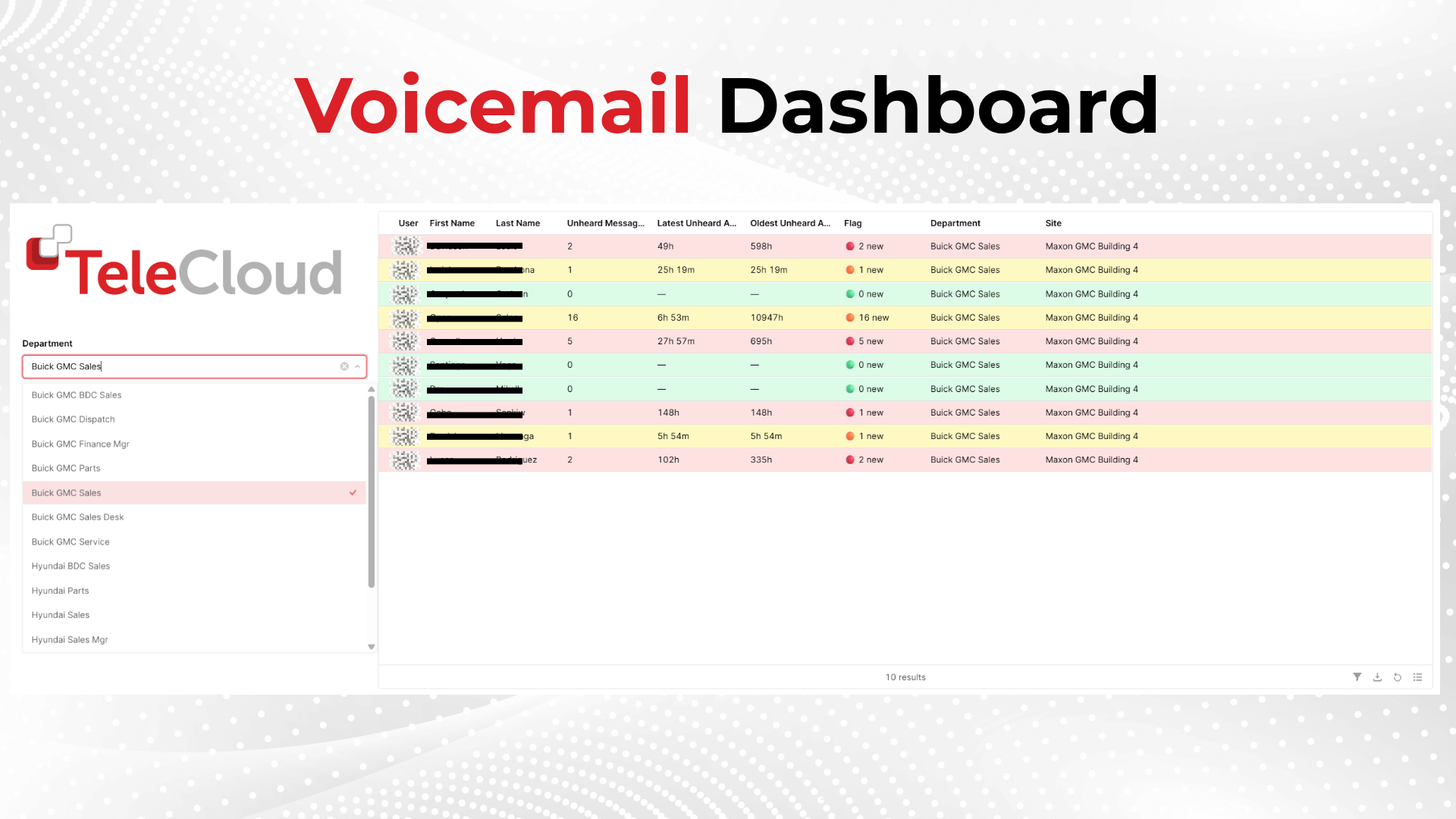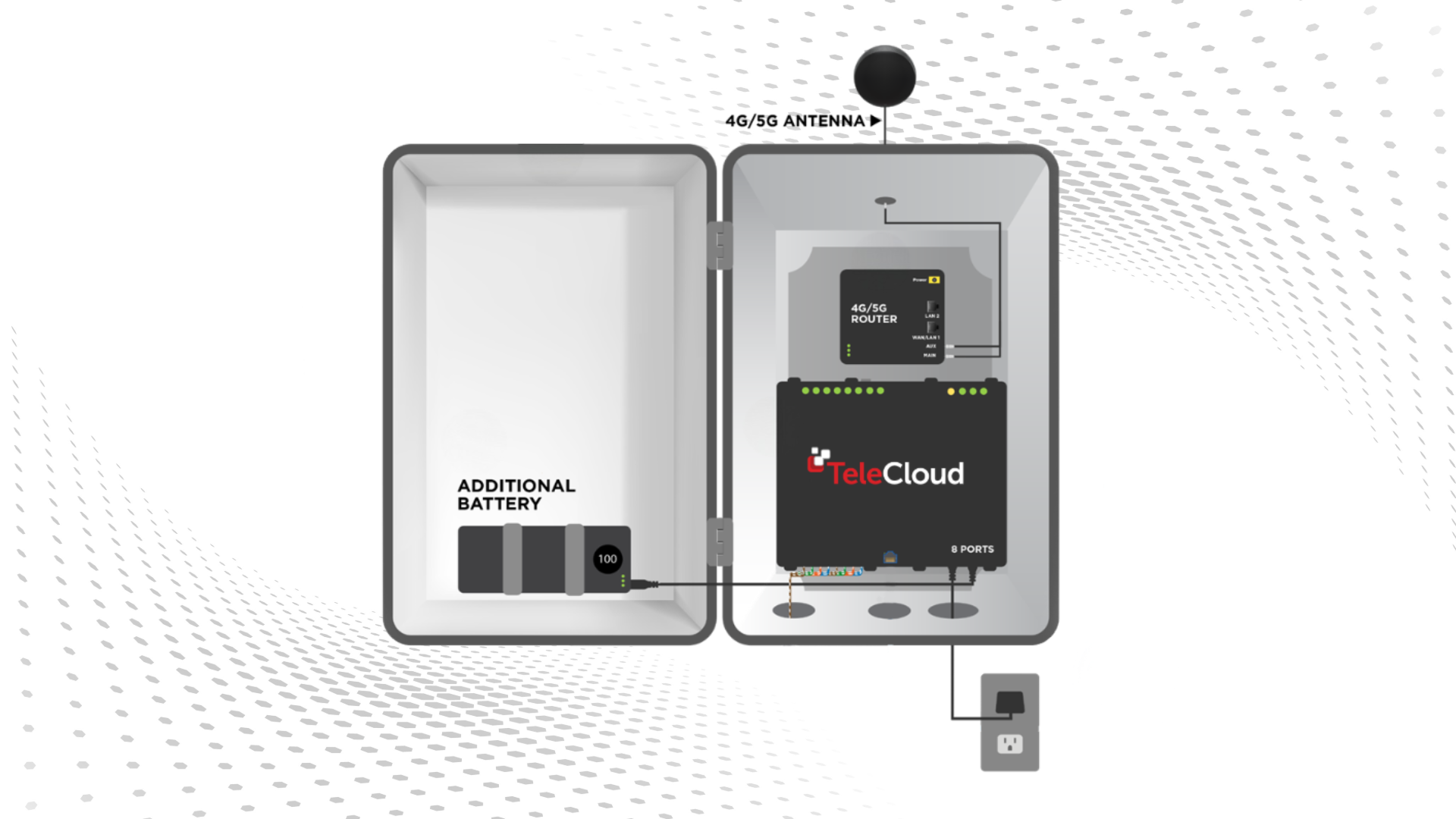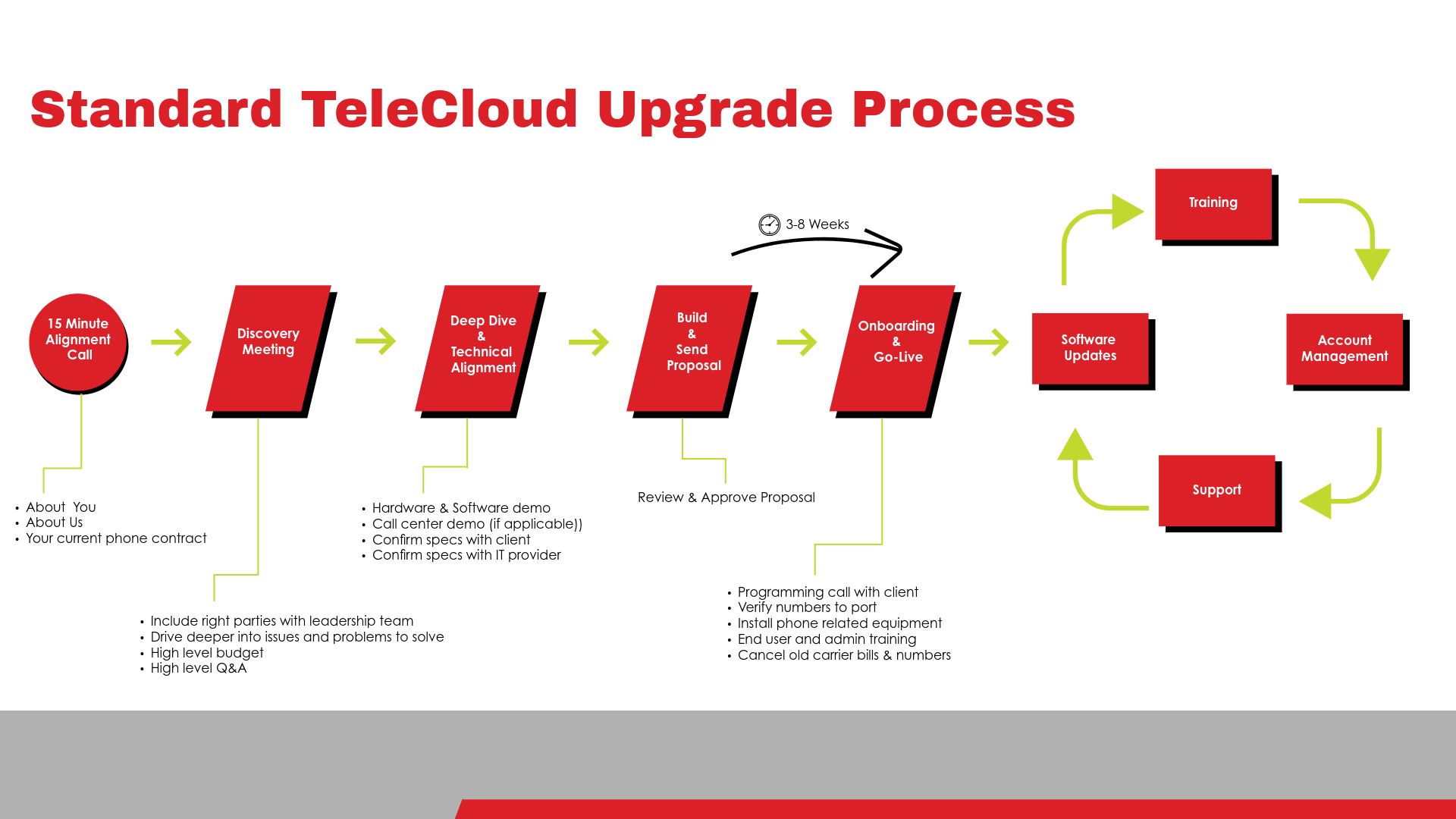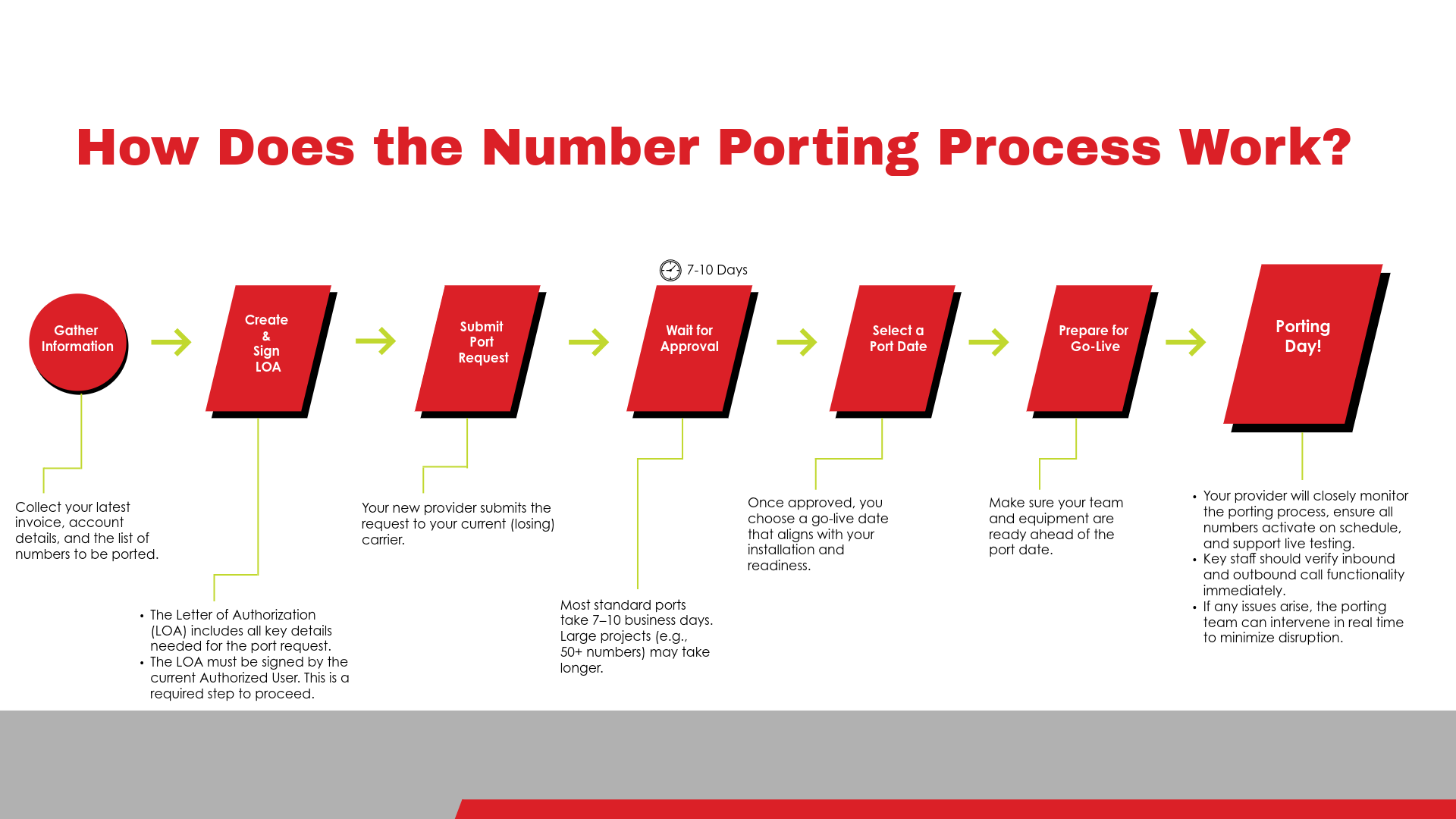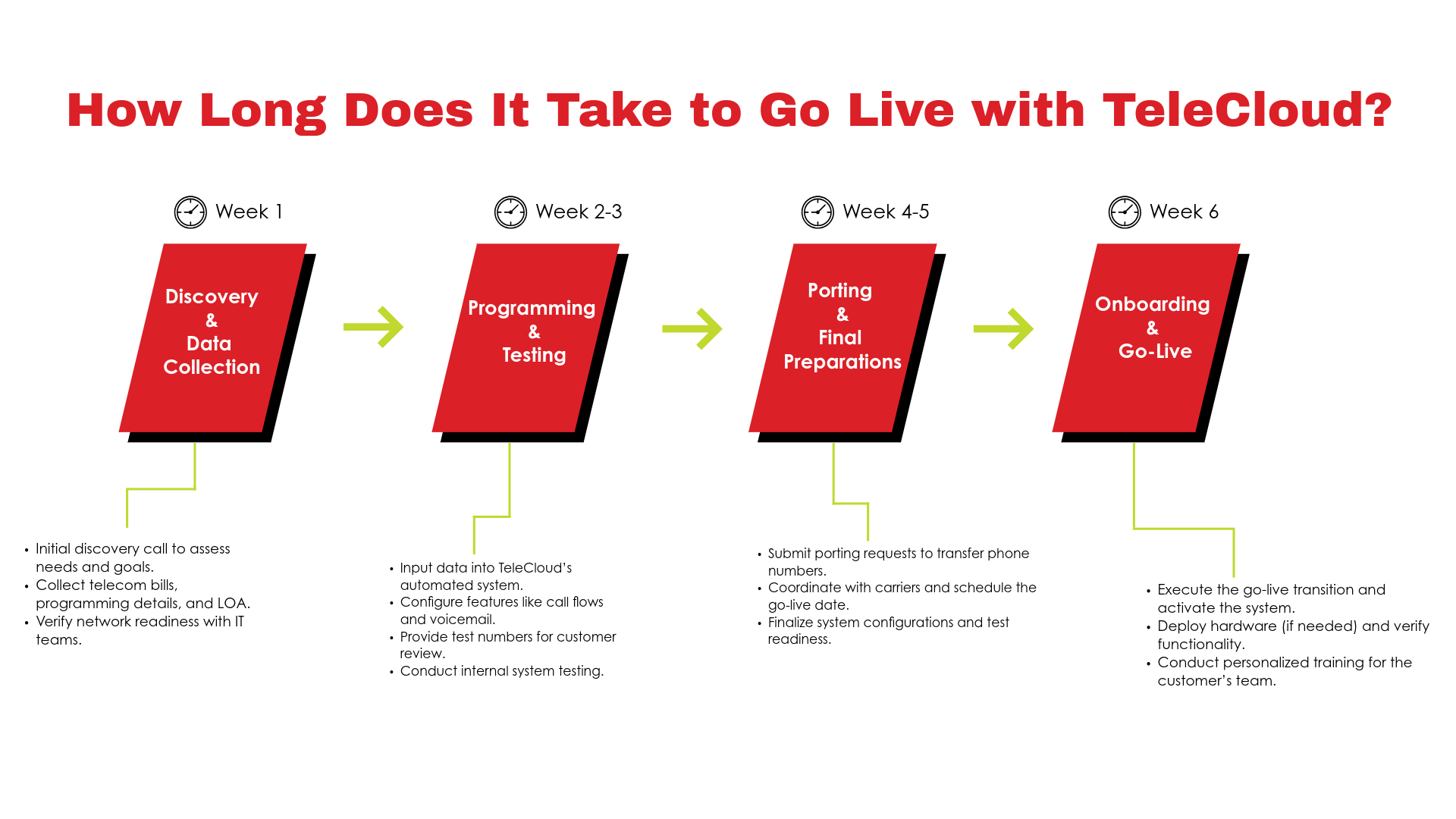What's the Process to Buy a Hosted Phone System for Fifteen Users or Less?
December 1st, 2017
5 min read

A hosted phone system can be a tremendous asset to a company, but it’s important to determine if it’s the right fit for your company. Here at Tele-Data Solutions, we meet with many small business owners, and over the years, we’ve learned that lots of people in that position consistently have the same kinds of questions.
We know your time is valuable, so before you invest hours of time with a potential VoIP provider, check out this blog and accompanying video. It can help you determine if a hosted phone system is right for you and, if so, outline the five-step process to successfully acquire one.
Step 1: Determine If You’re Already in a Phone Contract
 The very first thing any small business owner needs to do is determine if his or her company is already locked into a telecommunications contract. (This could be with Verizon, Comcast, AT&T, or any number of other providers.) It’s common for small business owners to be eager to switch to new phone systems—only to learn they’ll get hit with early termination fees if they leave before the contract end date. These fees are written into the contract and can vary in pricing and scope.
The very first thing any small business owner needs to do is determine if his or her company is already locked into a telecommunications contract. (This could be with Verizon, Comcast, AT&T, or any number of other providers.) It’s common for small business owners to be eager to switch to new phone systems—only to learn they’ll get hit with early termination fees if they leave before the contract end date. These fees are written into the contract and can vary in pricing and scope.
If you find yourself facing early termination fees but still want to switch, don’t get discouraged! Talk to your new potential VoIP provider, and a creative solution could be possible. Some companies, for example, will split an early termination fee with a new customer to help make the switch less financially taxing. Some local VoIP providers are willing to discuss these kinds of options with a small business. Remember, just because you’re locked into a contract doesn’t mean you’re stuck!
To be certain you know the terms of your contract, you need to contact your current carrier provider and get answers—such as your contract end date—in writing.
We understand small business owners are busy, though, and don’t always have time to call into a provider to get this kind of information. To save yourself time and hassle, simply scan your current phone statement and send to your potential VoIP provider, and they can find out this information for you. Send the scan along with a signed letter of authorization, and anyone on the VoIP team can then call and access the pertinent information about your account. With tools like electronic signatures, you don’t even have to print anything. In a matter of minutes, you could be well on your way to knowing the exact terms of your current contract.
Step 2: Have a Realistic Time Frame
 Especially if you’re somewhat new to the world of hosted phone systems, it’s often surprising to learn that turnaround time for an installation date can be between two and six weeks. The exact time depends on several factors, including the port date for the phone numbers and your company’s schedule for the phone hardware installation. To order hardware, program the phones, arrange the installation, and take care of all other pertinent details, it generally takes about three to four weeks.
Especially if you’re somewhat new to the world of hosted phone systems, it’s often surprising to learn that turnaround time for an installation date can be between two and six weeks. The exact time depends on several factors, including the port date for the phone numbers and your company’s schedule for the phone hardware installation. To order hardware, program the phones, arrange the installation, and take care of all other pertinent details, it generally takes about three to four weeks.
It’s important, therefore, to look forward and to plan accordingly. If you have a pending event, a new hire, or any other scheduled event where you want your new phone system up and running, make sure you initiate the process of switching over early enough to accommodate.
Note, if your phone system is entirely down and nonfunctional, it is possible for VoIP providers to rush the installation of new phones first, but, in most cases, you’re still looking at a minimum of two weeks to port your numbers.
Step 3: Participate in an Educational Webinar
 This is a crucial step in the process because it helps you determine if a hosted VoIP phone system is really right for your business. We have found most small business owners and their key personnel gain significant insight by participating in a thirty-minute educational webinar that covers the following:
This is a crucial step in the process because it helps you determine if a hosted VoIP phone system is really right for your business. We have found most small business owners and their key personnel gain significant insight by participating in a thirty-minute educational webinar that covers the following:
- The new phone and software features
- How the installation process works
- How the training process works
- Investment requirements and budgetary information
This specific webinar will educate you and your team about these phone systems, and it will arm you with the knowledge necessary to know whether it’s worth pursuing this further. Again, we understand that small business owners wear a lot of hats and don’t have a lot of dispensable time. This thirty-minute process can answer a lot of questions and end up saving you wasted time and effort, if the solution isn’t ultimately right for you.
Step 4: Get your IT computer consultant involved in the process.
 After participating in the webinar, we recommend you get your IT consultant looped into the conversation. This will help everyone avoid technical surprises and problems as a result of Internet connectivity, wiring, or IT hardware configurations. Working with the IT consultant will make clear whether it’s necessary to separate the phone and computer cabling, whether it’s possible to keep the router and network switch, whether gigabit phones are the best solution for your company, and a host of other installation points specific to your office and location.
After participating in the webinar, we recommend you get your IT consultant looped into the conversation. This will help everyone avoid technical surprises and problems as a result of Internet connectivity, wiring, or IT hardware configurations. Working with the IT consultant will make clear whether it’s necessary to separate the phone and computer cabling, whether it’s possible to keep the router and network switch, whether gigabit phones are the best solution for your company, and a host of other installation points specific to your office and location.
This conversation can easily be done via a conference call or even over e-mail, and afterward, the VoIP provider will have a much better sense of how to proceed.
If you don’t have an IT consultant, please let your VOIP provider know.
Step 5: Receive the hosted VoIP phone system proposal.
 After the previous four steps, it’s time to receive and review the new proposal. Tele-Data Solutions is local to New Jersey, which means we’re able to visit your office onsite, if desired, or you can visit our office in Union, New Jersey. This gives us the opportunity to see your office environment firsthand, which means we can spot any potential installation issues, and it also gives you the opportunity to ask us any remaining questions face to face.
After the previous four steps, it’s time to receive and review the new proposal. Tele-Data Solutions is local to New Jersey, which means we’re able to visit your office onsite, if desired, or you can visit our office in Union, New Jersey. This gives us the opportunity to see your office environment firsthand, which means we can spot any potential installation issues, and it also gives you the opportunity to ask us any remaining questions face to face.
After project approval is given, the project management phase begins, in which your company identifies all the features and phone products that will be necessary and valuable for your location. This is often as easy as filling out a checklist. (For example, do you need live answer? A backup auto attendant? How many rings before the auto attendant answers? What should the programmed message say? How do you want calls handled and routed after hours? How do you want to route calls for employees on vacation or who are out sick?)
From there, you can arrange an installation date. (Note, in many cases, this can be the same as the port date.) The actual installation usually takes anywhere from thirty minutes to two hours, depending on whether you’re sharing cabling or putting in dedicated wiring for the phones. Regardless of installation method, at no time should you be without the ability to send or to receive calls.
Is a National Provider the Best Fit for My Business?
For some small businesses, a national VoIP provider makes the most sense. If the following conditions apply to your business, consider reaching out to one:
- You prefer to install the IP phones, router, and switch yourself or through your IT company.
- You don’t want on-site end user phone and software training.
- You’re comfortable getting tech support from a provider overseas or in another state.
National companies are set up to offer remote installation packages, and if a small business is comfortable with that, those packages can be quite effective. If you’re a do-it-yourselfer who just needs remote installation and a backend VoIP provider, a local company might not be the best fit.
What Do Local VoIP Providers Offer?
 Working with a local company means you get access to a lot of benefits:
Working with a local company means you get access to a lot of benefits:
- Face-to-face interactions
- A deeper understanding of your unique business and people
- Onsite installation
- Onsite end user training
- A deeper understanding of your current IT setup
A local company is also better positioned to ensure you don’t miss a single call during the actual installation. Phone numbers typically port at noon, but a local company can work with you to route your incoming calls during the downtime to cell phones or voice mail. Every call matters to a small business, and you shouldn’t have to miss one just because you want to change over your phone system.
Consider working with a local expert who has specific experience with small businesses as they’ll be aware of unique problems (and creative solutions) for companies with few employees. For example, if you install your IP phones and determine, after the fact, that the wiring needs to be changed, that’s a simple fix for a small office. If you were going it alone, this might seem like a daunting hurdle, but it’s a nonissue with the experience and expertise of a local company.
A local VoIP provider will be able to get your communication system up and running efficiently and ensure your phone system is one of your most powerful assets.
Have questions? Want to know more about hosted VoIP phone systems? Contact us today.
 By Jen Andretta
By Jen Andretta
VoIP Solutions Specialist, Tele-Data Solutions
E-mail: jen@tele-datasolutions.com | Direct Line: (908) 378-1214
I’ve been in the business of helping people my entire career. After graduating from Marist College, I began working in ad sales, shifted to health and wellness for over ten years, and currently specialize in helping businesses with their VoIP phone technology. I live in Westfield with my hubby and two active boys.
vin@telecloud.net OR call/text 908-378-1218





